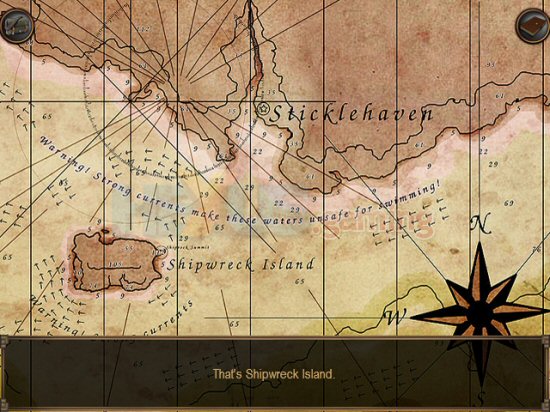Wii-mote not used to its potential
The snail-paced action is part of parcel of many point-and-click adventures, but the gameplay feels even slower than most due to the lack of direction and any triggers to move the story forward. I often found myself wandering around the fairly large mansion and grounds not knowing what I was supposed to be doing or where I should be going and as a result wasted time covering the same ground, re-examining objects and randomly combining these in the hope that they’d create something I could use.Disappointingly, ‘And When There None’ suffers from the same irritating problem that many point-and-click adventures suffer from: illogical puzzles. Logic is thrown out of the window and replaced with ambiguous puzzles where the combination of random objects is just as likely to see you progressing rather than the use of skill or real thought. Even using the Wii-mote to solve a number of these puzzles has been implemented poorly.
With the unique capabilities of the Wii-mote I expected it to be used in a number of interesting ways to solve puzzles. As it stands, there are segments in the game where using the Wii-mote is part of the puzzle, for example, twisting it to open a door, using it to shovel some flour out a sack or spinning it to open a safe, but it hasn’t been used to its full potential. There are so many doors in the mansion that you spend most of your time just twisting your Wii-mote to unlock them and it just gets a bit pointless and irritating. The shovelling motion, which I thought I’d need to use to obtain flour from a sack, was actually just a quick shake up and down of the controller and not a shovelling motion at all. The Wii-mote’s unique functionality just hasn’t been taken advantage of.


The screen cursor on the other hand works well with the Wii-mote allowing you to point the controller at the screen and quickly move it over an object to examine or interact with it. This is why the Wii should be ideal for games such as this; you are literally pointing and clicking.
Like many games of this type the cursor changes when you hover over something of interest and an icon appears telling you how you can interact with that item. You may see an eyeball, meaning you can look at the object, a hand, meaning you can pick it up or a set of footprints, meaning you can walk over to that area. The use of icons has been handled well and means that you don’t spend any unnecessary time pixel hunting for the smallest of clues.









